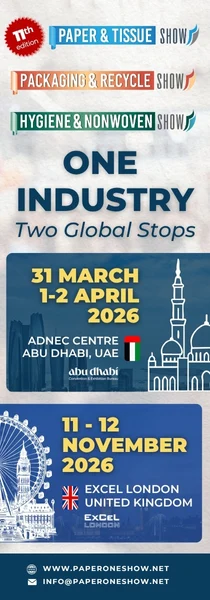
- Industry news
Industry news
- Category news
- Reports
- Key trends
- Multimedia
Multimedia
- Journal
- Events
- Suppliers
Suppliers
- Home
- Industry news
Industry news
- Category news
- Reports
- Key trends
- Multimedia
Multimedia
- Events
- Suppliers
Suppliers
Vestas’ epoxy chemcycling tech targets plastic pollution through wind turbines
14 Feb 2023 --- Vestas has developed a chemical process within the Circular Economy for Thermosets Epoxy Composites (CETEC) initiative to drive circularity for epoxy-based wind turbine blades.
“Until now, the wind industry has believed that turbine blade material calls for a new approach to design and manufacture to be either recyclable or beyond this, circular, at the end of life,” says Lisa Ekstrand, vice president and head of sustainability at Vestas.
“Going forward, we can now view old epoxy-based blades as a source of raw material. Once this new technology is implemented at scale, legacy blade material currently sitting in a landfill and blade material in active wind farms can be disassembled and reused.”
Ekstrand says this signals a “new era for the wind industry,” accelerating the achievement of circularity.
The Coalition for Epoxy Technology & Sustainability (CETS) enlists that epoxy resins are used in various industries, including building, coating, automotive, aerospace, sports equipment and food packaging.
It is a resilient substance that can withstand thermal and hydro stress, making it effective at preventing product degradation over time, according to CETS. However, this resistance also makes epoxy resins hard to recycle.  Vestas’ solution can chemically break down epoxy resin into virgin-grade materials.
Vestas’ solution can chemically break down epoxy resin into virgin-grade materials.
Chemcycling epoxy
Vestas’ solution is enabled by a novel chemical process that can chemically break down epoxy resin into virgin-grade materials. The chemical process was developed in collaboration with the partners of the CETEC project – Aarhus University, Denmark, the Danish Technological Institute and the leading producer of epoxy, Olin.
CETEC was introduced in May 2021 as a coalition of industry and academia to investigate circular technology for turbine blades to address the lack of recycling technology for epoxy resins.
“Chemcycling of epoxy-based materials would allow deconstructing these highly stable polymer chains into molecular building blocks,” explained Dr. Troels Skrydstrup of Aarhus University at the time.
“These building blocks are easily processable and can be utilized to produce new epoxy, which will have the same quality as the original material. Avoiding the loss of valuable molecular complexity in such a way is a highly desirable concept and an important step to sustainable materials.”
Almost two years later, Vestas has established a new value chain, supported by Nordic recycling leader Stena Recycling and Olin, to focus on scaling up the novel chemical disassembly process into a commercial solution.
“Once mature, the solution will signal the beginning of a circular economy for all existing and future epoxy-based turbine blades,” the company shares.  Vestas has established a new value chain to commercialize a novel chemical disassembly process for epoxy-based wind turbine blades.
Vestas has established a new value chain to commercialize a novel chemical disassembly process for epoxy-based wind turbine blades.
Saving blades from landfill
Vestas details that in the most mature markets for wind energy, the first turbines are reaching the end of their operational life and are slated for landfills. It shares data from WindEurope, elucidating that around 25,000 metric tons of blades will reach the end of their active life annually by 2025.
“In the coming years, thousands of turbines will be decommissioned or repowered, representing a major sustainability challenge but also a valuable source of composite materials,” says Henrik Grand Petersen, managing director at Stena Recycling Denmark.
“As one of Europe’s leading recycling groups with a wide footprint in Europe, we have a central role in the transition to a circular economy. We see this solution as a huge opportunity to take part in making a sustainable solution even more sustainable and circular and are ready to apply our chemical recycling expertise and knowledge to this process.”
It is still being determined how many times the blades can be chemically recycled without losing quality. Talking to The Verge, Steven Nutt, professor and chair in composite materials at the University of Southern California Viterbi School of Engineering, remarks: “It could be really big. But as they sometimes say, the devil is in the details.”
He uses eggs as an analogy to explain that once cooked, egg whites cannot be reversed to be runny, but says he is “excited” to see the development. Vestas, however, remains hopeful about finding a breakthrough solution for recycling epoxy blades.
“The newly discovered chemical process shows that epoxy-based turbine blades, whether in operation or sitting in a landfill, can be turned into a source of raw material to potentially build new turbine blades,” says Mie Elholm Birkbak, specialist of innovation and concepts at Vestas.
“As the chemical process relies on widely available chemicals, it is highly compatible for industrialization, and can therefore be scaled up quickly.”
By Radhika Sikaria












